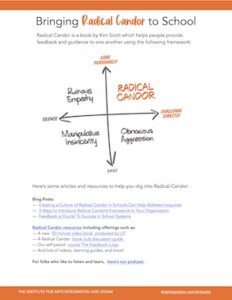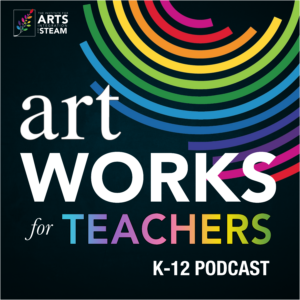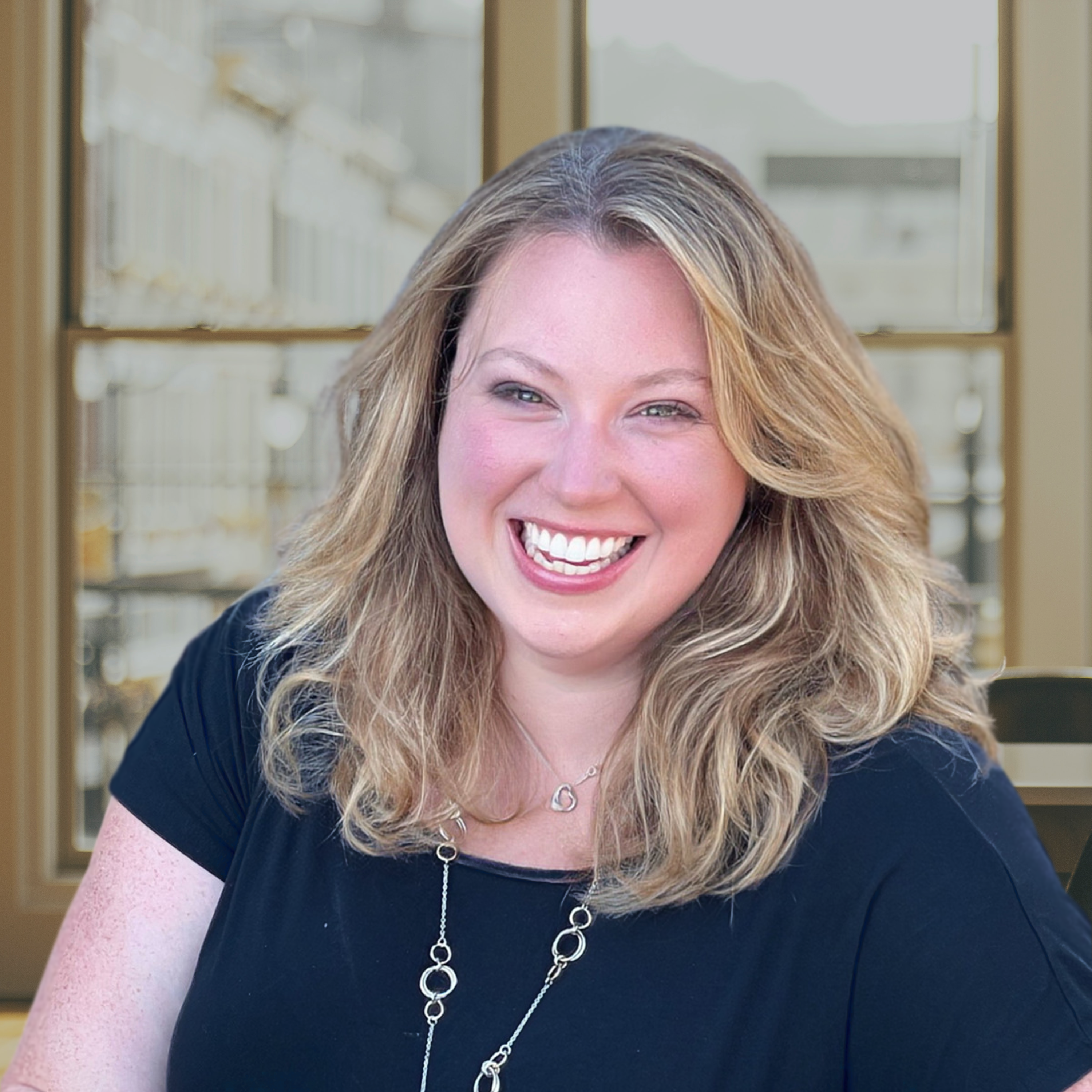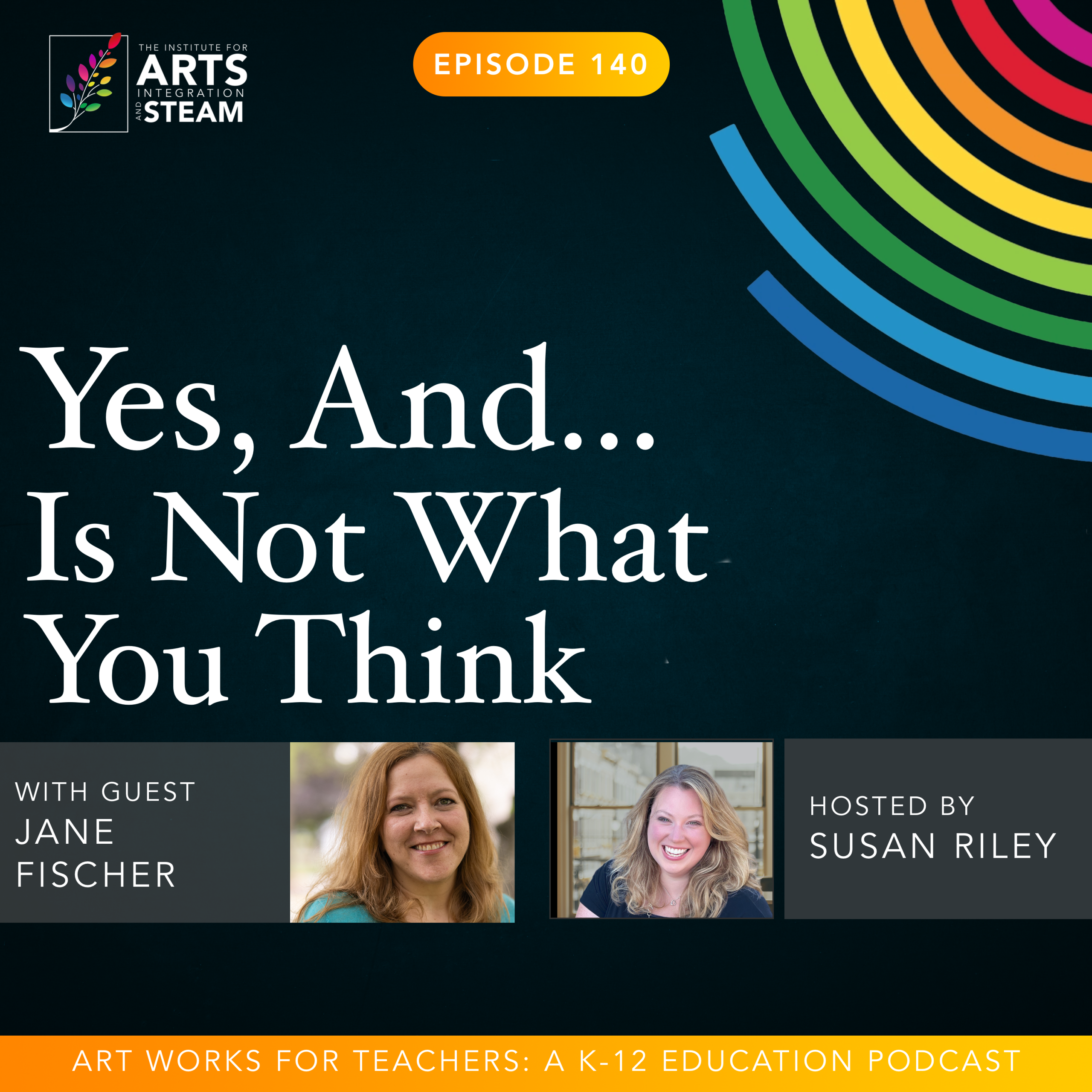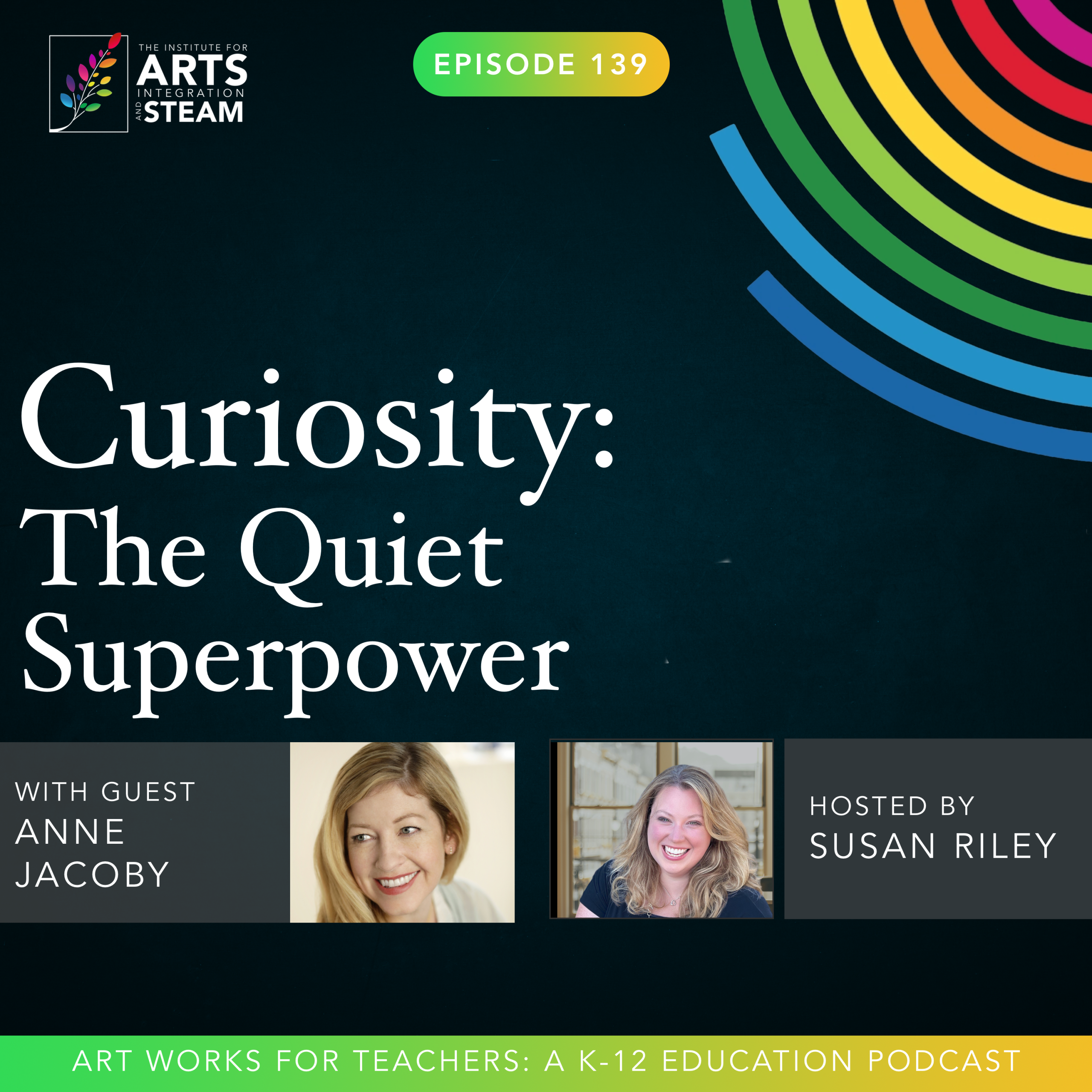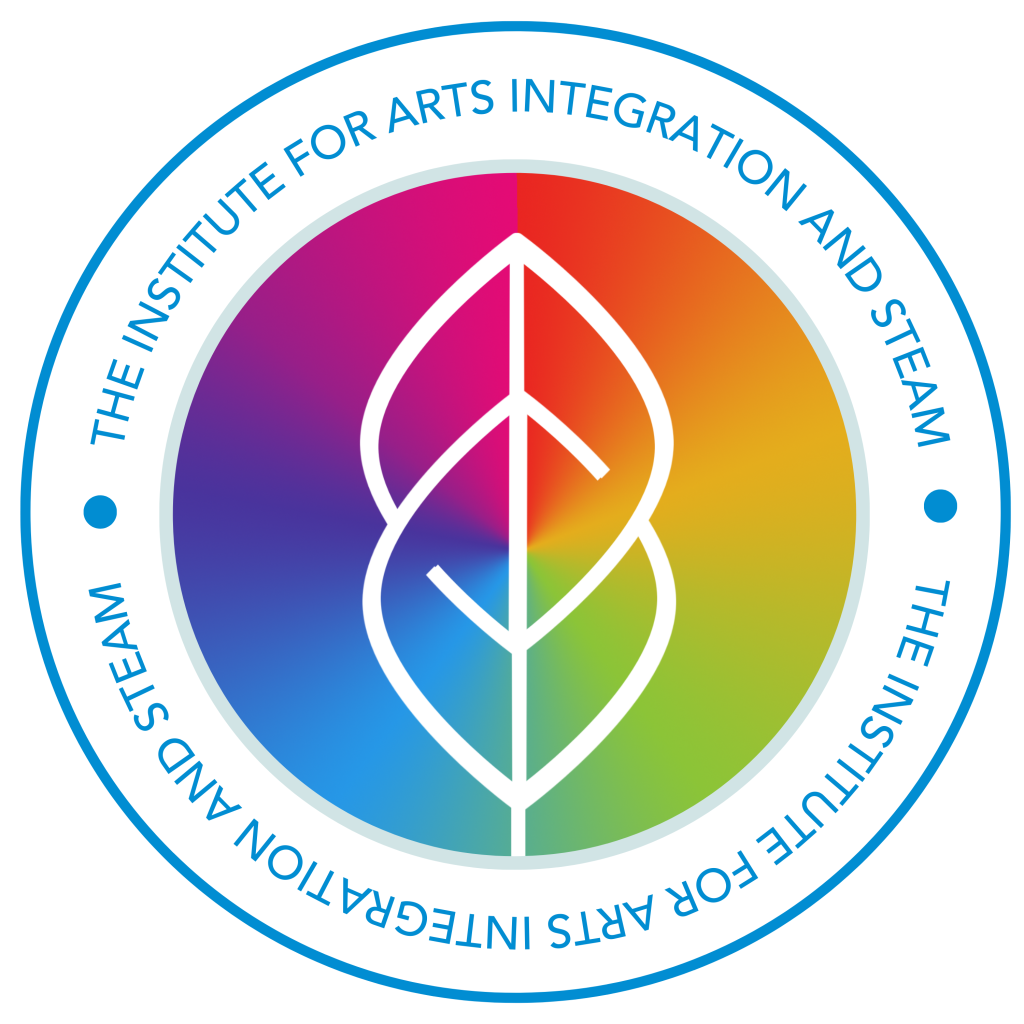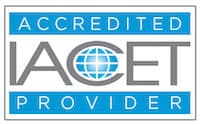ART WORKS FOR TEACHERS PODCAST | EPISODE 020 | 39:18 MIN
Embracing Radical Candor
Enjoy this free download of Bringing Radical Candor to School.
Amy Sandler: I am so excited to be here, Susan, and happy new year.
Susan Riley: Happy New Year to you as well. So to, before we begin, how about if you start with just introducing who you are, what you do and kind of give us a little bit of background.
Amy Sandler: Sounds great. So my name is Amy Sandler. I am currently the lead, coach and podcast host at Radical Candor. Radical Candor is the executive education company based on the bestselling book, which I imagine we’ll be talking about today. I’ve held some other roles at Radical Candor over the past five, five and a half years I’ve been there.
I have also served as Chief Marketing Officer and Chief Content Officer. And in all of those roles what I’ve done is I really, I’ve shared Radical Candor, the ideas of Radical Candor, how to put it in practice with tens of thousands of people, from CEOs to individual contributors just starting out thousands and thousands of folks around the world.
So it’s been a real, a real pleasure and I’m excited to share it with your listeners today.
Susan Riley: Absolutely. So Radical Candor is required reading for our team. Everybody who get on board to our team reads Radical Candor. And they also read another book by Simon Sinek. So the two of them work in tandem together.
I’m curious if you could, can you kind of give a brief overview for those who are not familiar with the book, Radical Candor, what the framework is and kind of how you might be able to use it.
Amy Sandler: Absolutely. And I’m also curious like how you’re putting it into practice cuz that’s how we love to keep learning how people are, are actually using it.
So like you said, and I don’t know if folks can see over my shoulder, this is the second edition of the book. The first one had a red cover. This one’s got a little bit more of a sort of yellow orangeish color. So this book, Kim Scott, wrote this book. Kim Scott is someone I actually went to business school with, she had a very successful career at places like Apple and Google and some startups and and some mistakes along the way.
And I wish she had written this book when we were in business school together. But I think sometimes the best learning is through making mistakes. So we are big believers in learning from, from our mistakes. And really at its core, it’s actually a very simple… the simple idea is that you can succeed at work by building what we would call radically candid relationships by caring about the people you work with as like real, actual human beings, caring personally.
At the same time, you’re willing to challenge them directly, right? And so the reason why this is a simple idea, but maybe a little harder to put into practice is because we tend to make mistakes on one side or the other. We’re either caring, caring, caring, and we’re not challenging, or we’re focused so much on challenging that we’re forgetting to care and, and I’d say the sort of the simple ideas that we can actually do both. It’s kind of a false dichotomy to think that we have to do one or the other. And in the book there’s, I think there’s three things that folks, especially folks that are have more managerial positions would be helpful to think about is there’s three things that that Kim focuses on beyond building these relationships.
Right. So one is, can I create a culture of guidance? So in the work world and in the workshops that we do, we tend to call it feedback. We actually prefer the term guidance. I think it has more of coaching spirit, which is really what we’re talking about, helping people grow. So culture of guidance, can we help grow people on the team as individuals?
Help them actually take steps into the direction of their dreams, really identify their potential, what motivates them so that we can actually build the best team, and then can we get stuff done? Because there’s a reason why we’re not all working on our own. There’s a reason why we’re in teams and can we get stuff done collaboratively.
So those are kind of the three buckets that the book focuses on with the sort of atomic building block of all of it. These one-on-one, radically candid relationships.
Susan Riley: And that’s what I so appreciate about it. It is simple, it’s simple concept but it can be difficult to put into practice. And we find that you asked about how we use it in our organization.
Like I said, it’s required reading as people on board. But then actually putting it into practice is something that they’re not exactly kind of ready for. I don’t think, even though we have them read it , they kinda, it’s one of those things where they think, okay, I’ll read this. And, but they don’t actually do it.
And then when we start to put it into practice for them, it’s kind of like a deer in headlights moment cause this does not happen in most workplaces. I know for, for my, you know, career. It never happened in schools. The idea of guidance versus feedback. We talk about feedback a lot in schools but guidance is so much more helpful because, you’re right.
We’re coming at it from a spirit of we want you to succeed, we want you to win. We’re not trying to catch you in something. We’re trying to help you move through whatever mistake was made or perhaps a success, right? To capitalize on that success. For us, we use it as a framework to have challenging conversations when they come up.
So we’re really good at fostering community and support within our organization. But most of us are teachers. We’re, most of us come from a background of being really nice. And this is something that I wanna follow up with you on, but we are a little afraid to to make, to make somebody else upset by sharing something that we know is possibly going to hurt their feelings in some way.
So we tend to use this framework. We come back to it when we’re having those challenging conversations, and we oftentimes will step back and say, do we need to take a minute and review the framework again so that we can come back to the table? And everybody has the, the mindset that this is for the purpose for the organization as a whole.
I’ve used it in situations from reviews to like annual reviews for our staff members. I’ve used it in coaching calls with our students. I’ve had to use it during firing, but I’ve also had to use it during hiring. So, it’s so versatile. That’s how we tend to use, we really embed it into the culture that we are trying to build.
But I guess my question to you is, and, and this is from something that we struggle with that nice factor. So as, as educators, and that’s our audience, right? We are inherently nice. And so there are, it makes people afraid of the, even the word candor makes people more nervous, right? So how can we become open and more open to building this kind of a framework where we work?
Amy Sandler: Well, first of all, I love hearing how you’re putting it into practice. It’s, it’s just so inspiring. I know for Kim who spent, you know, years working on this book to have the ideas and for educators who, you know, let’s think about this idea of being nice and it, it does, it comes from such a good place.
Like you wanna be of service, we wanna be kind. And so I think, not to lose that, but to really to kind of dig underneath it both to what is our intention here and what are some of the costs. So one of the things that we like to do, whether we do it in keynotes or in workshops, is kind of double click on each of these two pieces of radical care.
So care personally, challenge directly. So when you look at kind of challenge directly. What makes it so hard to challenge directly is we got this idea like, if you don’t have anything nice to say, don’t say anything at all. Right. You know, sort of very, like from a very early age and it comes from such a good place and you know, all of a sudden now it’s your job to say the not very nice thing, and we would say, you know, it’s not just your job, but it’s your obligation in the sense that this person, whether it’s a fellow teacher, whether it’s a student, whether it’s, you know, sort of even sort of upwards feedback, whatever it might be, they are not going to know what’s working and what’s not working unless we share it.
And one of the best ways that we kind of open people up, sort of to get beyond that is think about, first of all, what are some of the costs of not saying the thing, yes, but also what are some of the benefits when you have been told that. So what we’ll do is, and this might be a helpful exercise if you all haven’t done it, or for the listeners to think about, you know, in their own school settings to share stories when they used radical candor, and by the way, this can be really hard. Because like you said, for most of it, like for decades, I wasn’t really having these kinds of conversations. And so we’re sort of going along thinking if we’re messing up, someone’s gonna tell us maybe we’ve been making the same mistake over and over.
We don’t know. And so I will share just like one super quick story. I can share a longer story as well. But just to kind of get at the idea, I was leading a workshop and I was writing – I’m left-handed – and I was writing on one of those big whiteboards. And this we, we went into a break. It was, you know, big audience.
This woman pulled me to the side. She said, “Amy, I love this workshop. I’m getting so much out of the workshop. I did just wanna let you know, because, because I would wanna know. You have magic marker all over your chin.” Now, that was all she needed to do to sort of show me that she cared. I really like how she kind of said, you know, I would wanna know it just, she was getting a lot out of the workshop and that’s, that was already radical candor. She went above and beyond. She’s like, she had one of those travel mirrors. She’s like, see, it’s right here. I mean, there was magic marker like all over my chin. Here I am on stage doing this thing. I didn’t wanna have the magic marker on my chin, right?
But nobody, like, she had the courage to actually pull me to the side and tell me. Now, you might think this is kind of a small thing, but these kinds of things happen all the time and sort of building that muscle. And we sometimes think like, oh, they’re smart. They’ll figure it out. Like, well, how am I gonna figure it out?
I’m talking to a whole group. And she pulled me to the side. She did it privately. She did it in a way that was really helpful. It was kind of invested in my success. So sometimes I’ll share that as an example. On the other side, just kind of what might be going through our, our minds. We have a partnership with Second City Works, the improv group.
You might know them. And so this was a couple years ago. We were about to go on stage. There were some improvisers and I was leading the session. And one of the gentlemen, one of the improvisers came out of the restroom. We were about to go on stage and his fly was down. Now my first reaction was to like look around and be like, who’s gonna tell this guy that his fly is down?
Because it’s not me. Like someone else. Someone else, right? Like it’s our first nature. And then I was like, Amy, you’re teaching radical candor. Like, and by the way, the thing about improv, which I love, and I think especially as teachers, there’s kind of this spirit of got your back. Like before we go on stage, we actually will say, I got your back.
Cause there’s this idea. We are a team. And if you’re gonna go out there and do your best to feel safe, to feel that trust that if I’m messing up or if I’m doing something great, people are gonna tell me, right? And so I pulled him to the side. I told him he was an improviser. So of course he was hysterical about it.
But I share that story just for a couple things. First of all, I teach radical candor to hold myself accountable to putting it into practice because I would wanna know, right? Like if I was worried about hurting his feelings, and now he goes on and now it’s made it so much worse. So I think, so thinking about kind of the cost, thinking about the, would I wanna know?
Would, you know, and, and often the last thing I’ll say before I kind of get your reflections on this, we will think about, you know, imagine someone has spinach in their teeth, right? And so I will ask this question to CEOs all over the world. If someone that reported to you, or sort of several layers down in the organization, told you you had spinach in their, in your teeth.
Would that build trust or would it diminish trust? And they’re like, it would build trust because this person, you know, wants me to succeed. So I just wanna acknowledge sometimes it takes courage, especially if there might be some hierarchy. Maybe things aren’t as simple and as clear as spinach or the fly down, et cetera.
These can be good examples of thinking about why we don’t say something. We don’t wanna hurt someone’s feelings, and now it’s much worse. Now it’s six months later, we haven’t had the performance conversation and we’ve gotta let them go or give someone else the promotion at rather than having that first upfront conversation.
Susan Riley: Yeah. And this sparks so many things in my mind. I was, I was thinking as you were speaking about in the book, there’s a story about Kim being pulled aside by Cheryl Sandberg and Cheryl having this really difficult conversation with her, like pointing out exactly what Kim needed to do next, right?
That this is, this is not working and this is what you need to do and how helpful that was to Kim because nobody else was saying it, right. She had no idea, but she knew something was off. Like she had this understanding that something wasn’t right. And I think for us as teachers, and we use this word nice, I don’t, I hate the word nice because it has this undercurrent that if you don’t, like you said, if you don’t have anything nice to say, you don’t say nothing at all.
And as Brené Brown says all the time, clear is kind, right? Yeah. So we if in this search to be nice to people, all that really does is cover up something with makeup that’s not really helpful at all. Right. And so kindness is actually being direct and being, and coming at it from that spirit, I think, and that’s what I think is so helpful about the entire book is understanding that this all comes from the spirit of helpfulness.
That I got your back component right, but I’m curious when we do have to have those difficult conversations I, and this is where, this is where the book kind of, we have to extend it and really work into the tools that are provided because it’s simple with like spinach in your teeth, right?
Sure. Then, but when we know that we have that colleague that is bringing things down because of the negativity that they just naturally have. I think about my mom sometimes. My mom is just a negative person. She doesn’t even realize it until somebody calls her on it and says it straight up and says this, you’re coming at this from a negative point of view.
Can we switch it? I think about those colleagues that, you know, we know they make things difficult or that there are things that are happening that are, that shouldn’t because of something that they’re doing that maybe they’re not aware. But yet we keep kicking the can down the road and when finally somebody addresses it and the result is either the person leaves or the person fixes it, right?
Suddenly there’s this huge amount of relief. But I feel like, you know, when you have a doctor’s appointment that you’ve been putting off and putting off and putting on, if, if you just had gone the first time, it would’ve been so much better. So I’m curious if we really jump into and extend the work and we have to have those difficult conversations, what are some strategies or techniques that we can approach those more challenging conversations than maybe something more simple.
Amy Sandler: Absolutely. And you know, one of the things that we’ve done to really, like all the ideas, as you say, are in the book. And then putting it into practice. So a lot of my time is spent in workshops with people actually putting these things into practice. One of the nice things about a virtual world is we’ll have people, you know, we’ll do an introductory session, then we’ll do a follow up session.
How’s it going? You know, so we can actually check in on that. I just wanna amplify. Brené Brown who we’re big fans of, you know, the kind is clear we, we like to say radical candor is kind and clear. So for folks that even maybe struggle with the word candor or challenge directly. Another way that I like to look at it, is clarity. Can I get more clear? And so just, that’s another potential way for people to look at. I think the beauty of the framework and I’ll get into your specific question of the difficult conversations, but where, where this framework, so this idea, if there’s sort of this two by two can a matrix and you’ve got radical candor in the top right where you’re caring and challenging.
Identifying the mistakes that we make when we are not caring and challenging, when we are not being kind and clear. So maybe we’re acting like a jerk, which is obnoxious aggression. Maybe we’re over in ruinous empathy because we’re so worried about being nice, that we’re focused more on the caring personally, the other person’s feelings, we’re not challenging, and then manipulative insincerity, which is kind of the worst place of all right, we’re sort of gossiping talking about people, et cetera. So I think the real benefit of the simplicity of the framework is that when we get into these difficult conversations, it gives us kind of a map and we can start to realize like, oh gosh, was I being kind and clear? You know, I, I was maybe coming out too aggressively.
Now I need to move up… So let me just kind of take a step back and share with you and your listeners what we would call kind of our order of operations when it comes to how we put this into practice, because I think before these conversations, Sometimes we think it’s like a Hunger Games death match.
Like I’ve gotta tell this, you know? And it’s like we’re sort of, you know, so first of all, like no, the point is I wanna help this person. We believe together we can do so much more. So coming from that spirit of, of kind of collaboration, and I think especially when we’re stressed and we’re busy and we’re so frustrated, it can be very helpful to kind of check in with our own intention and sort of where we in all of this, especially if we’re their leader, right?
And you know, have we been modeling it? So the first thing I always like to ask, even before I go into one of these conversations, is, what have I been doing to build a relationship with this person? You know, have I shown that I’m invested in their success? You know, is there something I might be doing that’s contributing to this problem?
Because it’s not human nature to start looking at that. It’s, we tend to sort of focus on their piece of the puzzle. So one of the most important things, especially if you are a leader, but for any relationship, is we’ve gotta kind of lay the power down. We’ve got to show that we can kind of take it before we start dishing it.
And by that I mean starting by getting feedback from the people that we work with. Starting by soliciting feedback. You know, how can I be a better thought partner with you? You know, what’s one way that you know, I could help you feel more supported in this role, one of the things that we’ll do is we’ll help people develop these sort of go-to questions, questions to solicit feedback from the people that they work with. So even before we go into these difficult conversations, just kind of checking in, like, have I been getting feedback from this person? Have I shown that I’m interested in their career growth, et cetera. And then, you know, depending on where we are, we might have a little, you know, debt there that we need to sort of start depositing into the relationship bank.
But for this specific conversation, like, what is my intention? You know, am I, am I doing this to be helpful? One of the most important things, and we’ve said this a few times, radically candid guidance is helpful, right? I am doing this in service of their growth. If I, and this is where we tend to fall short sometimes if I’m doing it cuz I’m really pissed off or cuz this thing happened or cuz the whole team is gonna run out the door if this doesn’t get fixed.
And I really need to do some work on kind of my own emotion. And that’s why we actually practice these conversations beforehand, right? So am I coming from a place of being helpful that this is about their growth? Am I coming from a place of being really curious? And this one can be hard because we’ve been going over the situation so many times, probably in our head we don’t know where this person is.
They might have a whole piece of data that we have no idea. Well, the reason why the email never went out is cuz the system went down or we don’t know. So coming from kind of a place of humility of like, I might be wrong. You know, they’re gonna have, I’m gonna challenge them and they’re gonna challenge me back.
So coming from that place of being humble. I also wanna think about two things. How do I want them to feel? Now, I can’t control their emotion, but I do want them to know that my intention is to be helpful and what’s the one thing I want them to understand? And so I can walk you through in a moment, like our specific model for kind of the way we say the things mm-hmm.
But before I do, let me just pause. If anything kind of sparked in in what I just shared before I get into the how to do it.
Susan Riley: I was actually just thinking about the idea of. School leadership and the dichotomy between school, school leadership and teachers and how often they are pitted against one another that teachers often feel like administrators are out to get them.
And that administrators so often, I, I mean, having been in a school administrator, you want to help the people in your building and yet they close their door or they will not engage or they will not… because they’re afraid of you. And so I think what you were so good about explaining is this undercurrent of humility first and modeling.
Here’s what I wanna see and being consistent with it. I think, and I don’t know about you, but I think it’s not enough to just do it once. You have to do it over and over and over again to, until it becomes a natural part of the culture and so that people under can, can trust that it’s not just for shell.
Does that make sense?
Amy Sandler: Oh, absolutely. And I think kind of naming those things, and again, this is why we really go into one-on-one relationships because what’ll happen is, and you might not see yourself this way, like you’re not sort of becoming a school administrator cuz you’re out to get everyone and you’re not a teacher because you wanna sort of be pissed off at this like that, but we start to label people and put people into boxes.
And I think sort of that’s where the humanity comes from is like, how can I set you up for more success? How can I be, you know what, we just recorded our podcast about, you know, thought partnership and not being a micromanager. So a really good question to ask for someone who’s, for example, struggles with micromanagement could be in that I’m raising my hand for myself here. You know, what, what is one time last week where you didn’t need me involved or you know, sort of like back off, like I got it covered. Or maybe where is something where you actually needed my help last week and I wasn’t, you know, available to you.
And the reason why these questions can be so helpful is that, what I think of as sort of thought partnership might be very different for someone else. Someone might need more of me or less of me based on sort of where they are. Another way to ask that question could be forward looking like, “hey, you know, where might you need some of my attention next week?”
It’s like, oh, I’m taking on this new class and I’m exploring these different things. I’d love to bounce some ideas off of your, oh no, like I’ve got it covered. Actually, can we check in, in a couple weeks? So I think just even getting to some better questions to build that relat. The other thing I wanna highlight that you said that’s critical.
These are not annual conversations. These are ongoing development conversations, and we really want to kind of decouple this idea of sort of official performance review with these radically candid conversations. Right? I remember when Kim was first coming out with the book like five years ago, and this journalist was like, oh my God.
How long do these radically candid conversations have to be, you know, it’s like, it doesn’t have to be like an hour long therapy session. The point is, we want this to be frequent. We want, and by the way, one thing I haven’t said that I’ve gotta say, emphasizing much more praise than criticism. So again, when we think about guidance, it’s doing more of the good stuff, focusing on the good stuff, not good stuff.
Like Great job, Susan, you know, or you’re a genius, but really getting specific and I’ll give you kind of the model that we use. And so we want these conversations to be so frequent, not nitpicking, not well, you did this and you did this, and you did this. But then it becomes just part of what we do.
Like, Hey, you know, I just led this this new class. I’m experimenting with a new model, share with me, you know, what’s one thing that worked well and what’s something that I could improve, you know, so that it’s ongoing. We’re not waiting for like the big ticket item. And I think that’s just like a really important thing.
And am I, am I being intentional about these opportunities to connect for feedback? So would it be helpful for me to kinda share them the model? Yeah. So, we use something we’ve adapted it. Folks might be aware of a model from the Center for Creative Leadership called SBI. We adapted it, we call it core context observation result, next steps.
And we added this idea of a next step because what often we found after these conversations is you thought you were getting something and it never came, and we realized we actually weren’t clear. Again, going back to clarity. So what’s the context? So maybe the context is you are going, and in your case maybe I have a funding request, and who would be the right person?
A superintendent or administrator, maybe a meeting with an administrator. Is that accurate? So maybe it’s, you know, the budget meeting with the administrator. That’s the context. So we don’t need to say a lot here. Observation. This is where we take it out of, you know, you’re a genius, you’re an idiot. You know, really being sort of putting on our almost journalist hat and what we observed, this is where we get into either behavior.
Or work products. So even that example you said of kind of a negative attitude or something, and you can kind of go through that model too. This works for all relationships, not just, you know, in the workplace. So the observation here for praise could be your analysis. There were some complex growth rates there and they were all accurate and you answered the question succinctly.
So you know, accurate presentation deck and succinct responses. That’s, again, we’re not sort of doing a personality judgment of how great or terrible this person is for criticism. There was an error on one of your slides and you weren’t able to answer the follow up questions so that would be praise versus criticism.
Now the next step is where I think we tend to fall short, by the way, especially with praise. And praise is such, I think, an underutilized tool to show people what good looks like to build a relationship. But for example, praise in this case could be, what is the result here that really matters?
So maybe the result, that’s what we mean by what’s the result? Well, maybe the result is, we’re gonna get the funding request. Or maybe the result is now the superintendent knows, like our team is the team to go to. Or maybe the result is now you’re on track for a promotion. But do you know this person well enough to know kind of what’s gonna motivate them, why the result matters to them?
What’s that sort of one takeaway you want them to think about why this matters? Same thing with criticism. We’re not gonna get the fighting request, you know, you’re gonna have to do some more work to build that relationship, et cetera. Yeah. And then this idea of the next step, and I think often we think of praise is sort of care and criticize as challenge, but again, both of them have both. So praise could be, “Hey, keep it up. I’d love for you to do the same presentation when we meet with the, you know, district superintendent or whatever it might be.” Or, “I’d love for you to show your colleagues how you built that deck.”Like we could all learn from you.
And criticism could be, “let’s, you know what, let’s meet next Tuesday. Let’s go through the deck and make sure that we’re ready for our next meeting.” And that’s where we start to move into more coaching, right? How can I help you keep moving forward? And that sort of, I’ve got your back, like, we’re in this together, not you need to fix this and you need to fit, but we’re sort of, we’re in it together.
Yeah. So context, observation, result, next steps. Yeah.
Susan Riley: What’s that’s helpful for, for that, from what I’m hearing, is that it almost takes any kind of, not personalization, but it’s very neutral. There’s very little emotional charge to it, which I think is really helpful because it’s so objective.
And to your point, when people are giving praise, again, we talk about this with teachers a lot, especially when they’re giving students feedback. You know, it’s not enough to say, awesome job. Great work here. People need specifics. And, and it’s without kind of the personalized context for it, right?
They need an objective because your great job could be somebody else’s, not quite there, right? So being very specific and, and looking for it almost like a scientist as though you’re observing from that area. then brings me to my, my next question, which is, you, you mentioned being curious. And can I just pause before we get change course to that?
Amy Sandler: Just one thing, if we have a moment. Because what you bring up, it’s just so important. And I want to just make sure that I’m clear on, one of the things about radical candor if people take away is that, here’s how I see it. How do you see it? So I’m sharing my perspective.
But they’re gonna have their perspective on it. Yes. Right? And so that’s where, and, and that is what we want. We want to come at it from this place of here’s how I’m looking at it. How are you looking at it? And that’s, that’s how we get to something even better. And the other thing I’ll say is the reason why we practice is that even though we’re sort of, we’re trying to take it out of personality, we’re trying to take it out of you’re this.
But there still could be some emotion, right? And so the person’s gonna have the emotion, how you show up in that moment is another way to build the relationship. So the model helps us get really clear on what we wanna say, and I think the practice helps us work through some of the emotion. Oh yeah.
Susan Riley: I, not to say that there is no emotion to the process at all. Yeah. Curious, right. But then being able to step back from that, and again, to your point, what stories are we telling ourselves, right? What stories are I’m telling ourselves? What stories are they telling themselves so that we can investigate that together?
Amy Sandler: Right. Hundred percent. You said it.
Susan Riley: Beautiful. So the, this word curious, which keeps popping up for me over the last couple of weeks, everybody that I’ve been talking to, this seems to be like the word that keeps coming out, which is interesting. How do you see curiosity and creativity kind of weaving themselves together in the radical candor?
Amy Sandler: Well, first of all, I love this question so much. You know, several years ago, one of the things that I also do is I teach a program out of Google called Search Inside Yourself, which is a mindfulness-based emotional intelligence program, and I would not be teaching radical candor had I not had this training in terms of mindfulness awareness, managing emotions, kind of to your point about what story am I telling? What story am I telling myself about the other person? And so when it comes to curiosity, you know, there was something a CEO leader told me probably like 10 years ago, and it really stuck. And it was this idea that you can’t hold both judgment and curiosity at the same time.
And so that, that just really landed for me. The other thing I’ll say is, every workshop, one of the sort of agreements I like to bring in is this idea of beginner’s mind. And I’m sure folks are familiar with this idea, but there’s a Zen Buddhist quote which says that in the beginner’s mind, there’s infinite possibilities.
In the expert’s mind, possibilities are few. And again, we want expertise. We want, you know, like we want people that sort of have that knowledge and that sort of institutional knowledge. And how often does that sort of, we’ve done this before, we’ve, you know, oh, that’s not gonna work. Going back, we have a negativity, we all have a negativity bias.
Oh, we tried it before. Oh, I’m gonna try to have this conversation. I know exactly how it’s gonna go. And so, I feel like curiosity with other people, beginner’s mind about other people, especially if we’re with our family. To bring that in, you know, with people that we’ve worked with for a long time. To have that beginner’s mind about, oh, this person’s gonna, this and this, you know, Sally’s gonna Sally, and you know, Nancy’s gonna… Right? So can I bring that curiosity with the person. And then also with our own emotions. Like one of the things we like to say is get curious, not furious. Now, easier said than done, take some practice.
But for me, the reason why that’s really helpful, let’s say I’m asking you for some feedback like, “Hey Susan, what’s one thing I could have been more succinct about on this podcast, or how could I have explained it more effectively?” You know, for me, as someone who has had to out-create her fixed mindset into a growth mindset, like I’m gonna tell myself here while you’re giving me some criticism, some things I could do better, get curious, not furious, like trying to counteract that part of me that’s gonna be like, but I did this and I did that.
You know, so how can I really get curious and so that I can stay open to grow?
Susan Riley: Mm, I love that. I love that. Because so often, especially when we’re, we’re taking things in I, we, we have another saying in our office that is 100% responsibility 100% of the time, and that is not, not that if something goes wrong, it’s completely your fault.
It’s the taking responsibility for yourself for where you are in that moment. And so being able to talk to yourself and be curious about what can I learn from this? What, and be open to that, I think is, is so helpful. Amy, thank you so much for being with us today. Could you let people know how they can follow you and stay in touch.
Amy Sandler: Absolutely. I, I feel like we could just go on for, for quite a while. That’s good. My email is amy@radicalcandor.com. If people wanna reach out directly, if you’re interested in our, you know, our workshops or services, we’ve got videos, we’ve got a lot of free content on the website, I encourage you to go check it out, radicalcandor.com, our podcast for lots of tips and, and nuggets.
So happy to help. And by the way, Susan, I can also just share, we’ve got blog posts actually about how to bring radical candor into school systems as well. So if you look up school or education on our website, you’ll find some posts directly related for educators. Absolutely.
Susan Riley: And we’ll, we’ll go ahead and link to those in the show notes to make sure that everybody can find them.
Amy Sandler: Wonderful. All right. And if I have a minute… Do I have one more minute? You know, given what you all are doing with creativity which I, I love in bringing and that spirit of, of responsibility for ourselves, our actions and, and curiosity. You know, something that that sparked for me is that I think a radically candid conversation is one where we are practicing creativity and curiosity with each other. Like it takes two to tango, it takes two to practice radical candor and can we be creative and curious with each other so we can get to, you know, an outcome that we probably might not have even imagined at the start.
Susan Riley: Oh, that’s amazing. That’s amazing. Thank you so much, Amy. I really appreciate your time today and I really look forward to continuing to dig into radical candor in the.
Amy Sandler: Thank you for your passion for radical candor.
Amy Sandler’s email – amy@radicalcandor.com
Radical Candor website – www.radicalcandor.com

